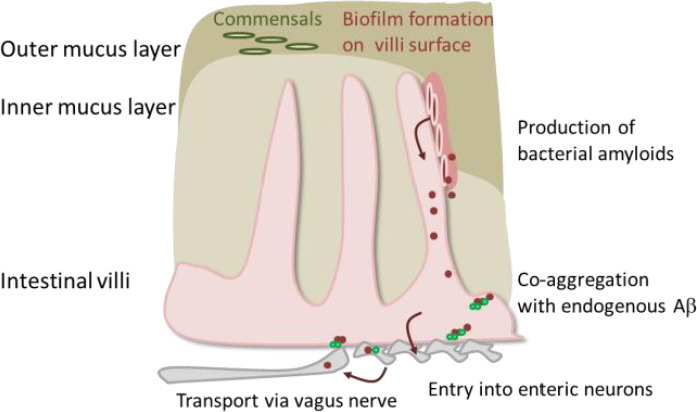Figure 1.

Putative transport of bacterial amyloids from the gut.
While the small intestine only has one mucus layer and is protected mainly by anti-bacterial peptides, colon has two mucus layers: the loosely attached outer layer contains the commensal bacteria. In case of mechanic insult of these layers or via dysbiosis, a gap within this protective barrier might occur, allowing direct attachment of bacteria to the enterocytes. Subsequent formation of biofilm might deliver bacterial amyloids that can directly act on endogenous peptides of the host or are transported via enteric neurons or vagal nerve endings further into the host’s body. Aβ: Amyloid β.
